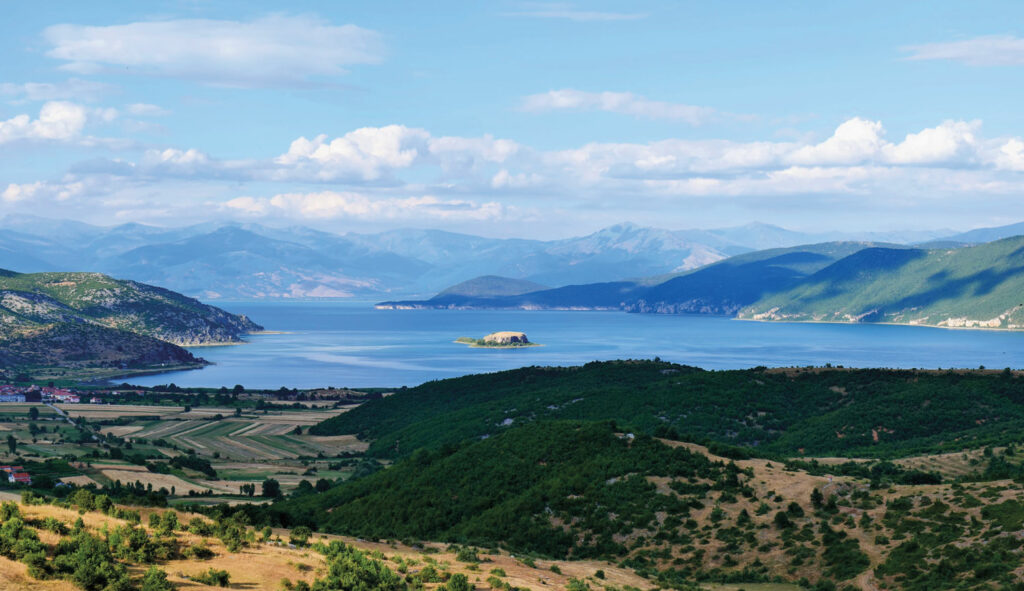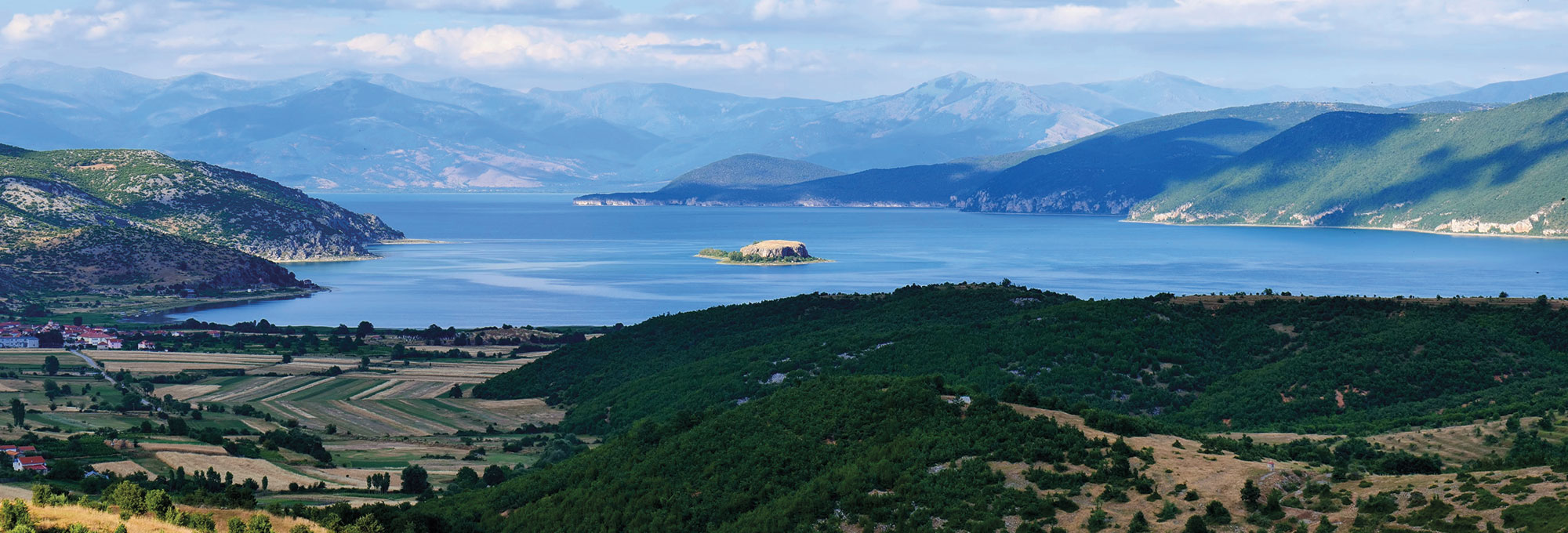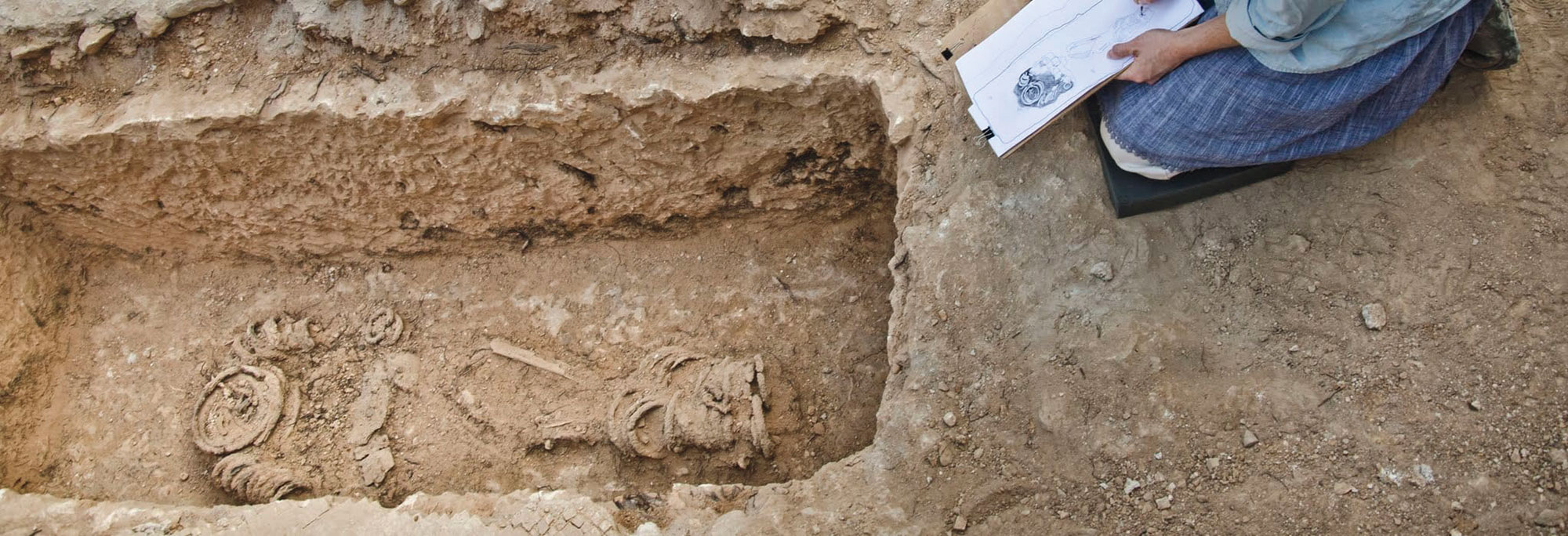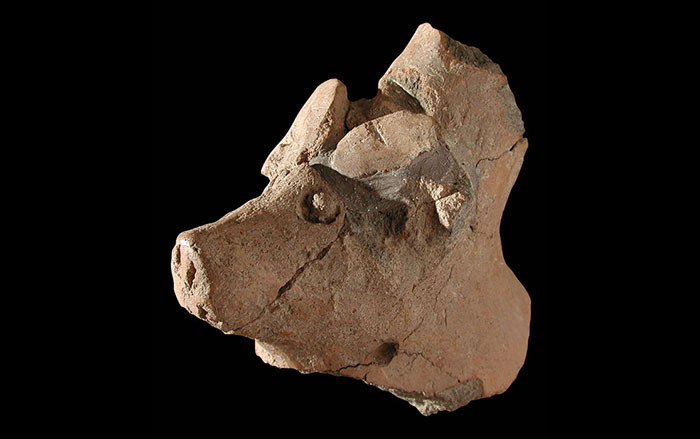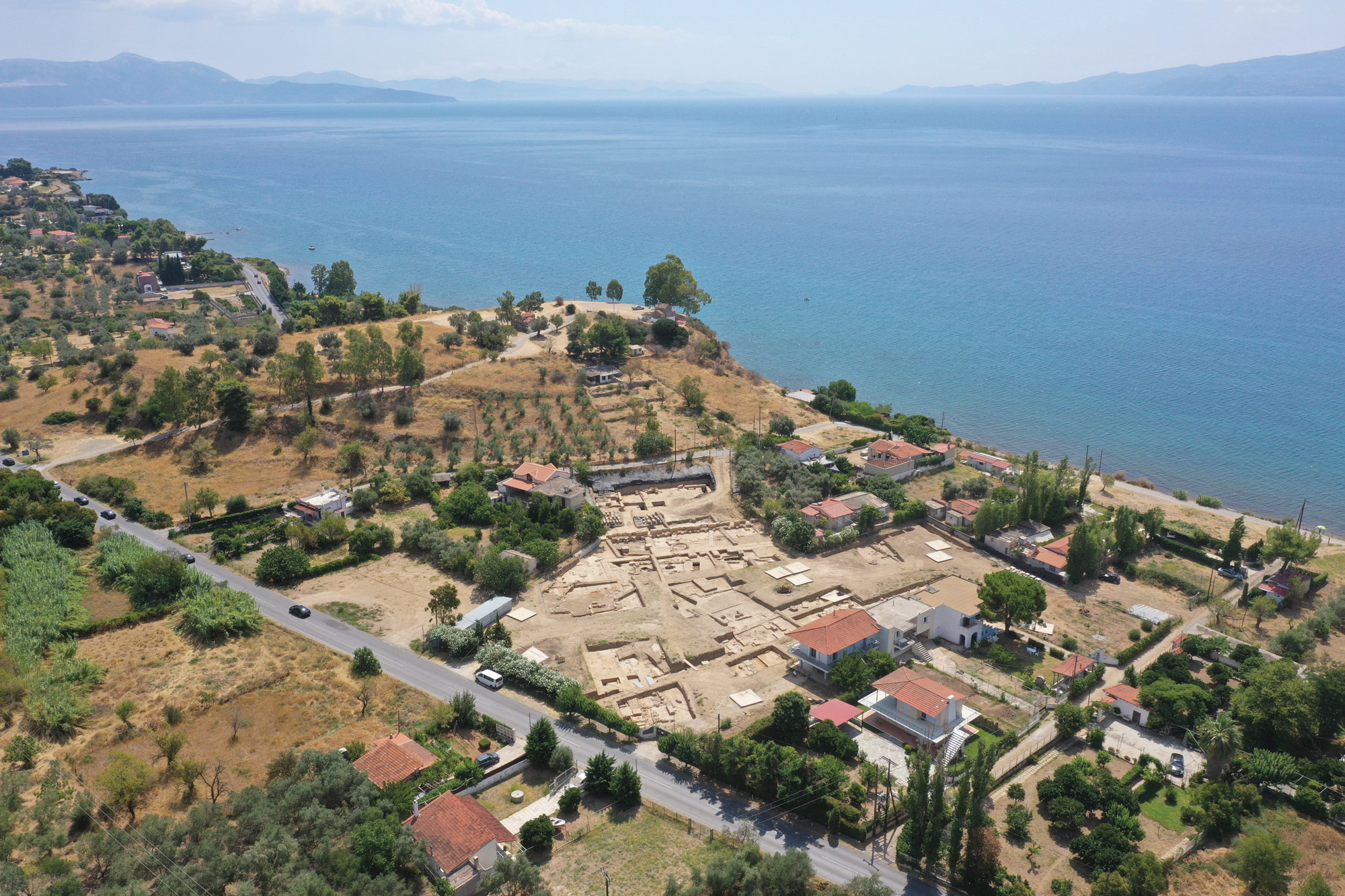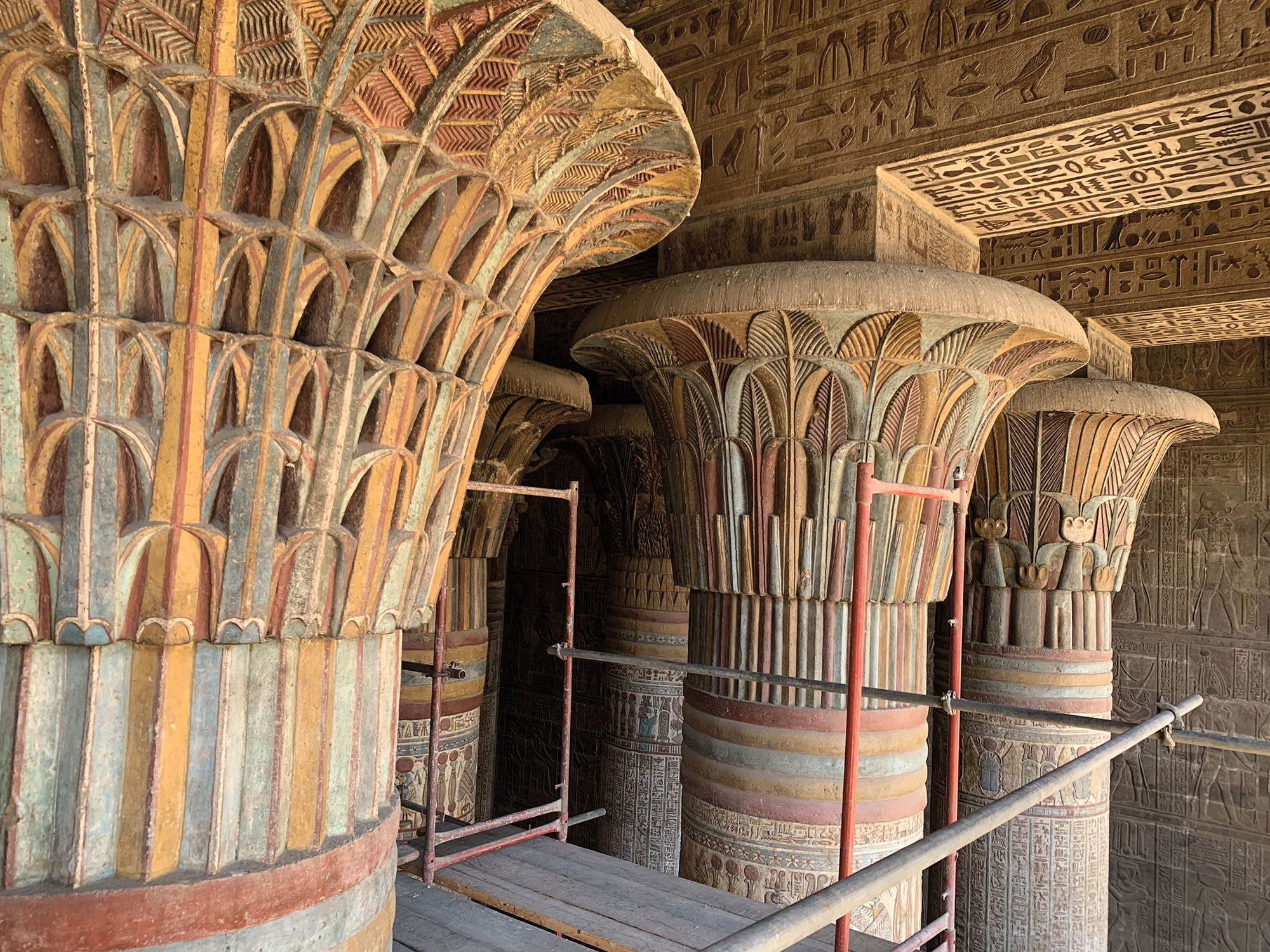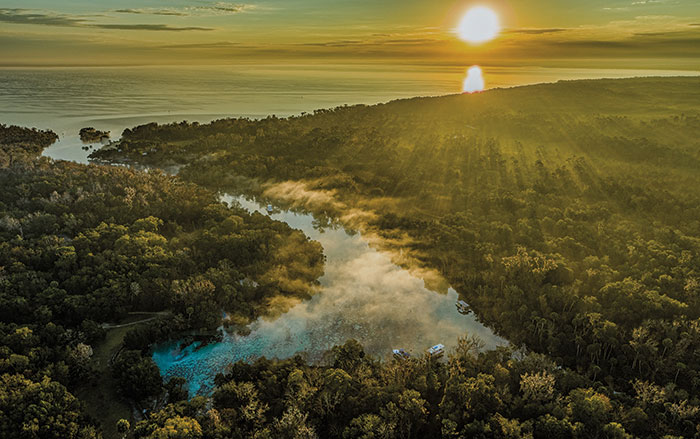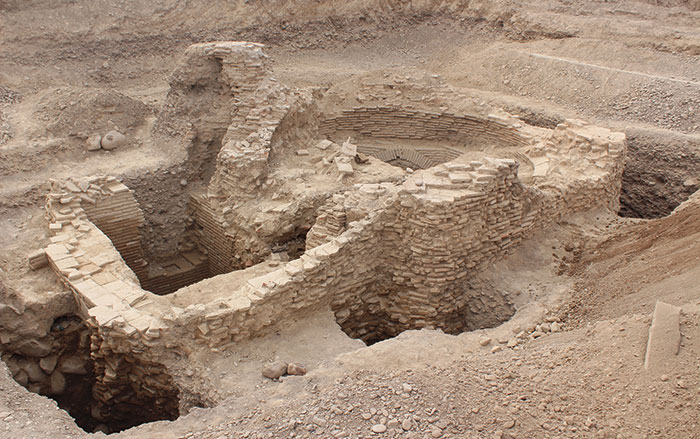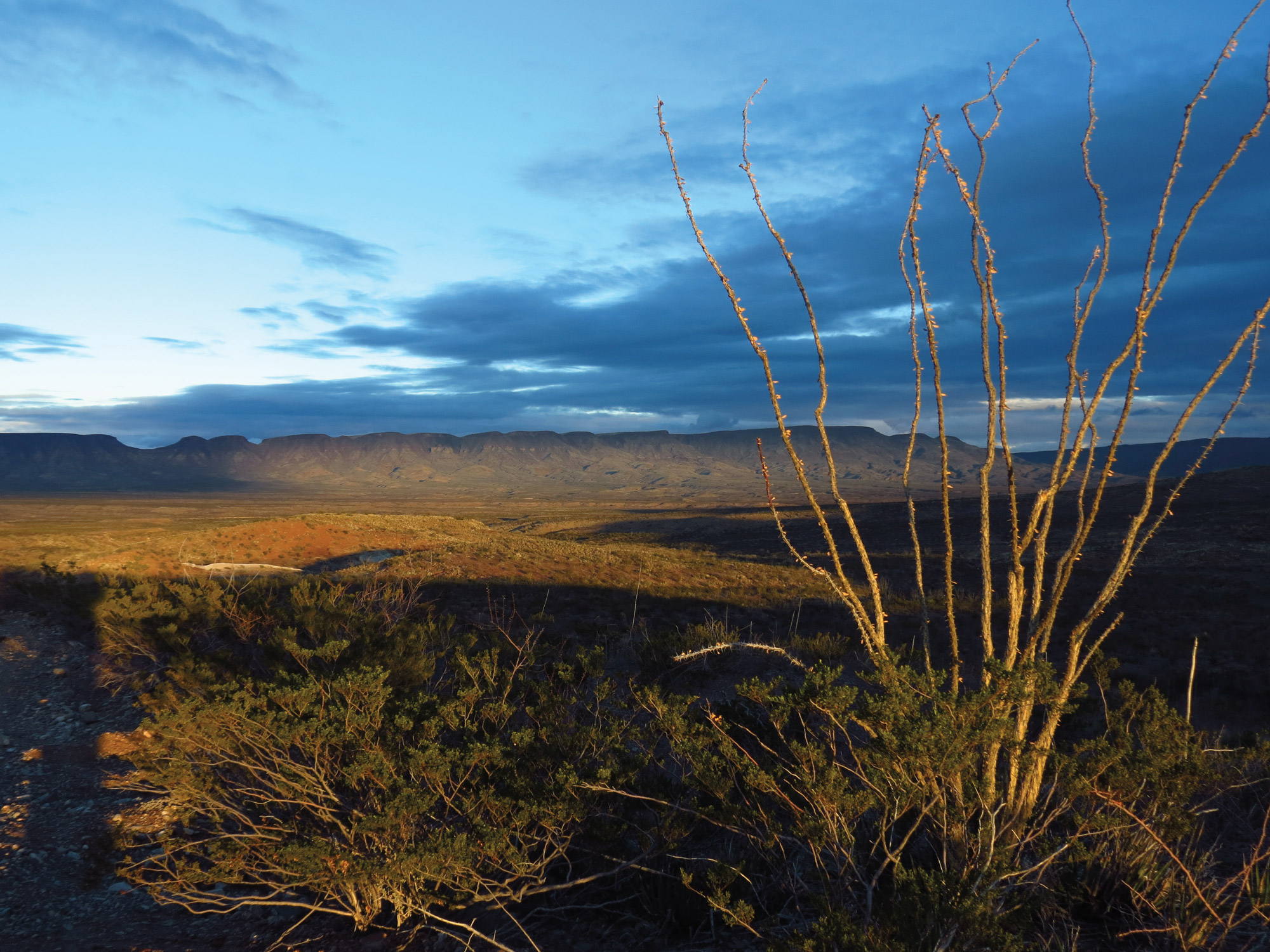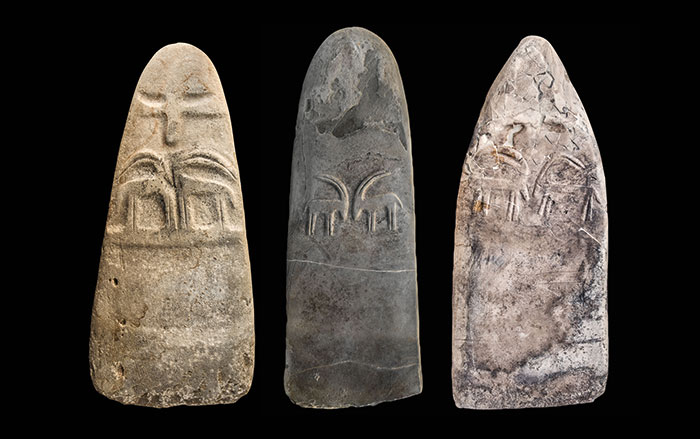
First settled at least 7,200 years ago, Great Prespa Lake still entices people for many of the same reasons it has since Neolithic times: The climate is pleasant, the freshwater fishing is good, and the hilly terrain protects against unwelcome intruders. Archaeological sites dot the lake’s shores, now split among North Macedonia, Albania, and Greece, but the best-preserved today are on two small islands, Golem Grad, meaning “Big Town,” in the North Macedonian sector of the lake, and Maligrad, or “Small Town,” in the Albanian sector. The sites have yielded substantial finds from nearly four millennia of human activity, from roughly 2200 b.c. to the Ottoman conquest in the late fourteenth century a.d.
Golem Grad showcases the life of a village from the ancient to medieval period. Neolithic Prespans fished at Golem Grad, but the settlement truly began to flourish in the fourth century b.c. Archaeologist Vera Bitrakova-Grozdanova of the Macedonian Academy of Sciences and Arts excavated on the island over the course of five decades and found graves filled with artifacts such as ceramic vessels, weapons, and coins minted by Philip II of Macedon (reigned 359–336 b.c.). She also unearthed gold and silver jewelry decorated with motifs including the Macedonian sun, often a symbol of ancient Macedonian royalty. In one house, the team found a second-century b.c. roof tile inscribed with the names of two craftspeople, one Macedonian and one Illyrian. “Multiple populations coexisted in Prespa in antiquity,” says Bitrakova-Grozdanova. “Their mutual relations were cultural and commercial.” Beginning in the fifth century a.d., the island’s inhabitants began building churches, and Golem Grad was transformed into a monastic community.
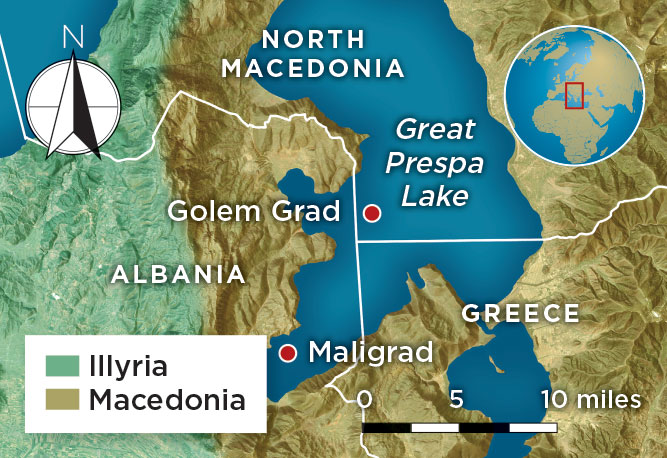
Maligrad, a tadpole-shaped islet less than half a mile from the shore, became a busy place around 1400 b.c. Archaeologists working atop a promontory have revealed evidence of the islet’s heyday, which extended into the Iron Age (ca. 1000–500 b.c.). Perhaps the most intriguing discovery from the era is a four-handled amphora containing a child’s bones that was lodged in the bedrock. “We think the vessel was part of a religious practice intended to protect the settlement,” says archaeologist Adem Bunguri, codirector of the Greek-Albanian Archaeological Expedition at Maligrad, members of which have been excavating there since 2009. According to Bunguri, a spiral gold pendant from the same early Iron Age period as the amphora provides evidence of a prosperous nascent aristocracy. A Roman-era revival on Maligrad ended abruptly with a Slavic invasion in the sixth century a.d., evidenced by headless and arrow-struck skeletons that archaeologists have found in hasty burials on the island.
THE SITES
Golem Grad is the better preserved of the two sites, with four house foundations dating from the second century b.c. to the fourth century a.d., the ruins of six Roman- and Byzantine-era churches, and a fourth-century a.d. cistern, all scattered throughout its forested wilderness. It is also a wildlife sanctuary for birds and snakes. Reaching the island requires a bumpy drive and a 45-minute motorboat ride. The archaeological site on Maligrad is sometimes kept off-limits to protect the excavations, but a cave on the side of the promontory hides the jewel box Church of St. Mary, covered inside and out with some of the best-preserved and most resplendent Late Byzantine frescoes in the region. The finest paintings date to the church’s construction in 1345.
WHILE YOU’RE THERE
Tour operators can help you rent a kayak or hire a motorboat from the Albanian town of Pustec to get to Maligrad and several shoreside cave-hewn churches where Christian hermits once dwelled. For more encounters with southeastern Albania’s ancient residents, check out the Kamenicë Tumulus, among the largest burials of its time in the Balkans, where more than 400 graves have been unearthed. A dinner or an overnight stay at Lakeview Hotel in Oteševo, North Macedonia, will transport you back to the 1950s, when the complex was a resort for Yugoslav president Tito and the political elite, with rooms now faithfully restored to mid-century Communist chic.
